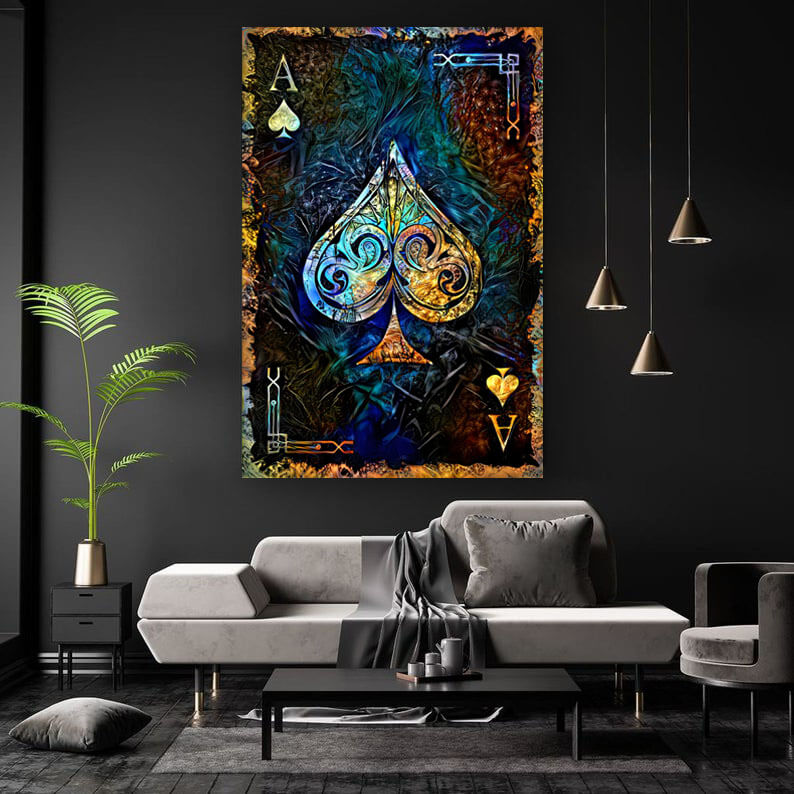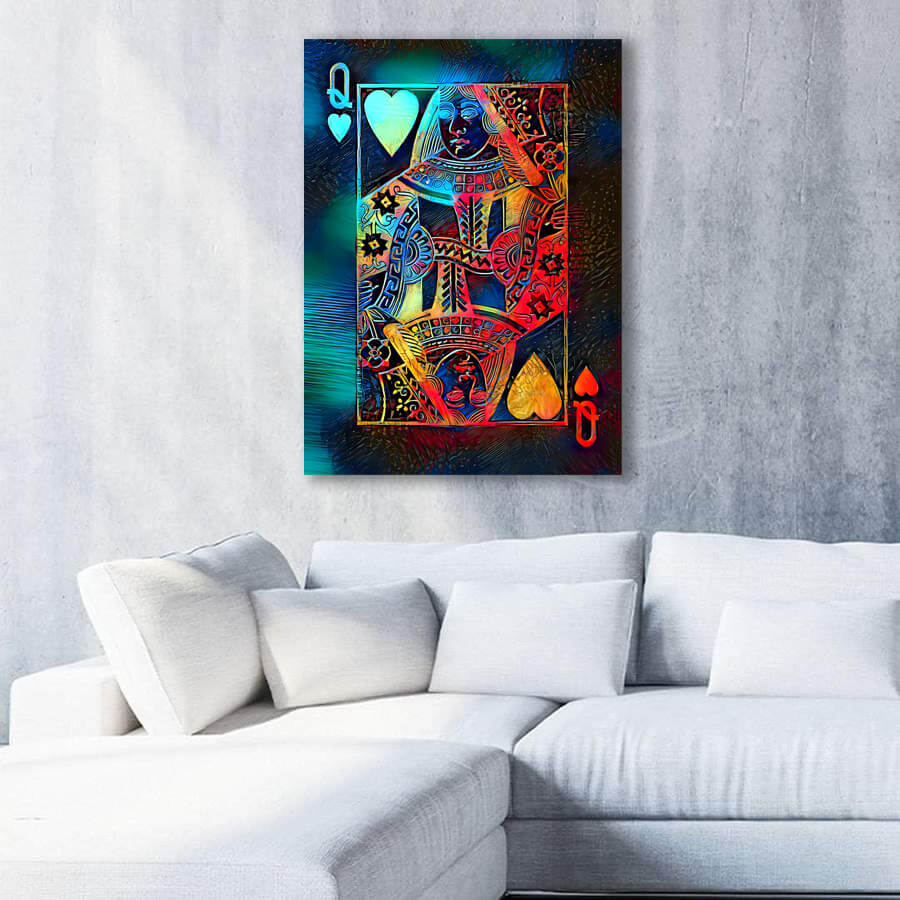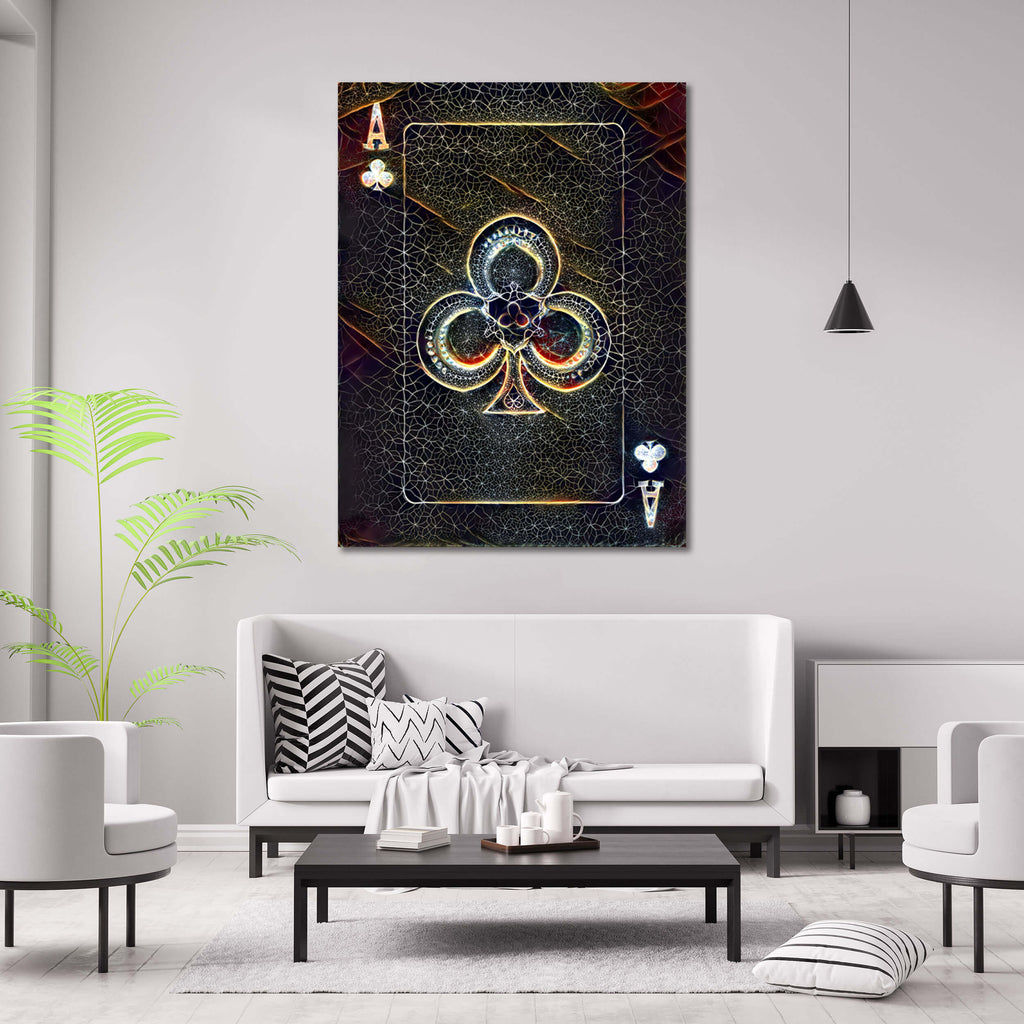De quel mouvement artistique sont issus les cartes à jouer ?
Mar 03, 2023
Vous êtes fan de jeux de cartes ? Connaissez-vous les mouvements artistiques qui ont inspiré la conception de vos cartes à jouer ? Les cartes à jouer existent depuis des siècles et ont évolué pour refléter divers styles artistiques et influences culturelles. Dans cet article, nous explorerons les mouvements artistiques qui ont inspiré la conception des cartes à jouer et la manière dont ils continuent de captiver les joueurs et les amateurs d'art.
Renaissance
La Renaissance est une période de transformation de l'histoire européenne, qui s'étend du XIVe au XVIIe siècle. Cette période est marquée par un regain de créativité artistique et intellectuelle, qui donne naissance à plusieurs mouvements artistiques influents, notamment la Renaissance italienne et la Renaissance du Nord.
À la Renaissance, les cartes à jouer sont devenues une forme de divertissement populaire parmi l'aristocratie et les riches marchands. Ces cartes étaient plus qu'un simple jeu : elles étaient des œuvres d'art à part entière. Les cartes à jouer de cette période étaient conçues de manière exquise, avec des motifs complexes et des illustrations détaillées de personnes, d'animaux et de paysages.
Les motifs des cartes à jouer de la Renaissance s'inspiraient souvent de motifs et de symboles classiques, tels que les dieux et déesses romains, les créatures mythiques et l'architecture antique. Les cartes elles-mêmes étaient souvent fabriquées à partir de matériaux de haute qualité tels que l'ivoire, la nacre et la feuille d'or, ce qui ajoutait à leur attrait luxueux.
La Renaissance a été une époque de grands changements sociaux et culturels, et les cartes à jouer en ont été le reflet. Les thèmes et les motifs des cartes à jouer ont évolué au fil du temps, reflétant l'évolution des goûts et des valeurs de la société. Par exemple, à mesure que la Renaissance progressait, les cartes à jouer sont devenues plus complexes et plus élaborées, avec des illustrations plus détaillées et des motifs ornementaux.
Les cartes à jouer de la Renaissance nous offrent non seulement un aperçu des valeurs artistiques et culturelles de l'époque, mais témoignent également du savoir-faire et de l'habileté des artisans qui les ont créées. Ces cartes ont été produites par certains des artistes et artisans les plus talentueux de l'époque, et leurs motifs complexes et leur souci du détail continuent de nous fasciner et de nous inspirer aujourd'hui.
Baroque
La période baroque, qui a émergé en Europe après la Renaissance, était une époque d'excès somptueux et d'opulence ornementale. L'art et l'architecture de cette époque se caractérisaient par leur grandeur, leur drame et leur extravagance, et les cartes à jouer ne faisaient pas exception.
Les cartes à jouer de l'époque baroque étaient des œuvres d'art à part entière, avec des motifs élaborés et ornés, riches en détails et en couleurs. Ces cartes étaient souvent ornées de motifs et d'illustrations complexes inspirés de la grandeur du style baroque.
Le style baroque était particulièrement populaire en France et en Italie, où il était utilisé pour décorer de nombreux objets, des grands palais et des églises aux cartes à jouer. Les motifs des cartes à jouer baroques étaient souvent inspirés de thèmes religieux et mythologiques, avec des représentations d'anges, de saints et de créatures mythiques ornant les cartes.
Les cartes à jouer de l'époque baroque étaient bien plus qu'un simple jeu : elles étaient un symbole de richesse et de statut. Les motifs complexes et les matériaux opulents utilisés pour créer ces cartes témoignaient de la richesse et de l'influence de leurs propriétaires.
Mais l'attrait des cartes à jouer baroques ne se limitait pas à l'élite fortunée. Les motifs complexes et les couleurs riches de ces cartes en faisaient une forme de divertissement populaire pour les personnes de tous horizons. Les cartes à jouer permettaient aux gens de se connecter, de socialiser et de s'offrir un peu de luxe, même s'ils ne pouvaient pas se permettre de grands palais ou des églises richement décorées.
Rococo
La période rococo est née au début du XVIIIe siècle en réponse à la grandeur et à l'opulence du style baroque. Cette époque se caractérise par une nouvelle insistance sur la légèreté, le côté ludique et la délicatesse dans le design.
Les cartes à jouer rococo reflétaient ce changement esthétique, avec des motifs complexes à la fois fantaisistes et raffinés. Les couleurs pastel, les motifs floraux et les illustrations délicates de personnages et d'animaux qui ornaient ces cartes marquaient une rupture marquée avec les motifs audacieux et ornés de la période baroque.
Le style rococo était particulièrement populaire en France, où il était adopté par l' aristocratie et était associé au style de vie somptueux et indulgent des classes supérieures. Les cartes à jouer de cette époque étaient souvent fabriquées à partir de matériaux de haute qualité tels que l'ivoire ou la nacre et étaient richement décorées de feuilles d'or ou d'autres métaux précieux.
Mais les cartes à jouer rococo n'étaient pas seulement un symbole de richesse et de statut social. Elles reflétaient également l'évolution des valeurs sociales et culturelles de l'époque. La période rococo a été marquée par un regain d'intérêt pour les loisirs et le plaisir, et les cartes à jouer étaient une forme de divertissement populaire pour les personnes de tous horizons.
Art Déco
Le mouvement Art déco, qui a émergé dans les années 1920 et 1930, était le reflet de l'évolution des valeurs culturelles et sociales de l'époque. Cette période était caractérisée par une fascination nouvelle pour la technologie, la modernité et le glamour de l'ère du jazz.
Les cartes à jouer Art déco reflétaient ce changement esthétique , avec des formes géométriques audacieuses, des formes épurées et des couleurs vives. Les motifs de ces cartes étaient souvent stylisés et abstraits, avec des formes angulaires et des lignes nettes qui évoquaient l'élégance et la rapidité de la technologie moderne.
Les cartes à jouer Art déco étaient particulièrement populaires en Amérique, où elles étaient produites par des entreprises de renom telles que Bicycle et Congress. Ces cartes étaient souvent fabriquées à partir de matériaux de haute qualité tels que le plastique ou le celluloïd et étaient conçues pour être résistantes et durables.
La popularité des cartes à jouer Art déco ne se limite pas à l'Amérique. Ce style a été adopté par des gens du monde entier, reflétant l'influence croissante de la culture américaine et l'attrait mondial du design Art déco.
Pop Art
Le mouvement Pop Art est né dans les années 1950 et 1960 en réponse à la commercialisation et à la consommation de masse de la culture populaire. Cette époque était caractérisée par une fascination pour le consumérisme, la célébrité et les médias, et les artistes ont commencé à intégrer ces thèmes dans leur travail.
Les cartes à jouer Pop Art reflétaient ce changement culturel, avec des motifs audacieux et colorés incorporant des images de célébrités, de publicités et de produits de consommation. Les motifs de ces cartes étaient souvent ludiques et irrévérencieux, se moquant de la culture matérialiste et obsédée par l'image de l'époque.
Les cartes à jouer Pop Art étaient particulièrement populaires en Amérique et en Grande-Bretagne, où elles étaient produites par des entreprises telles que Hoyle et Waddington. Ces cartes étaient souvent fabriquées à partir de matériaux de haute qualité, comme le plastique ou le carton, et étaient conçues pour être résistantes et durables.
La popularité des cartes à jouer Pop Art reflète un changement culturel plus large vers une forme d'art plus démocratique et plus accessible. En incorporant des images de la vie quotidienne dans leurs œuvres, les artistes Pop ont pu remettre en question les notions traditionnelles de grand art et d'élitisme, rendant leur travail plus accessible au grand public.
Les cartes à jouer Pop Art reflétaient les valeurs culturelles et sociales de l'époque, capturant l'esprit d'une génération obsédée par la célébrité, le consumérisme et les médias. Les motifs audacieux et colorés continuent de nous inspirer et de nous captiver aujourd'hui, témoignant de l'héritage durable du mouvement Pop Art.
Conclusion
Les cartes à jouer ont une histoire riche et fascinante qui reflète les valeurs culturelles et artistiques de leur époque. Des motifs complexes de la Renaissance à la fantaisie ludique de la période rococo, l'évolution de l'art des cartes à jouer a été influencée par divers mouvements artistiques à travers l'histoire.
Si vous êtes un fan de l'art des cartes à jouer et que vous souhaitez découvrir la grande variété de modèles et de styles créés au fil des siècles, nous vous invitons à visiter notre collection. Notre collection est la plus importante du marché, offrant une vaste sélection de cartes à jouer de différentes époques et mouvements artistiques.
Notre collection est soigneusement sélectionnée pour garantir que chaque pièce est de la plus haute qualité et authentique, ce qui en fait le choix idéal pour les collectionneurs et les amateurs d'art. Alors pourquoi ne pas prendre un moment pour explorer notre collection et découvrir l'histoire fascinante et la beauté de l'art des cartes à jouer ? Nous sommes convaincus que vous trouverez quelque chose qui vous inspire et vous ravit.













